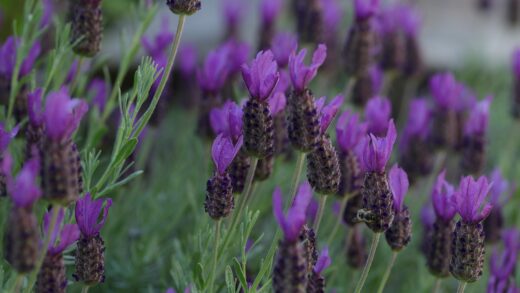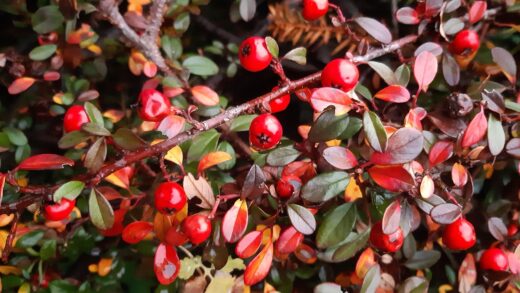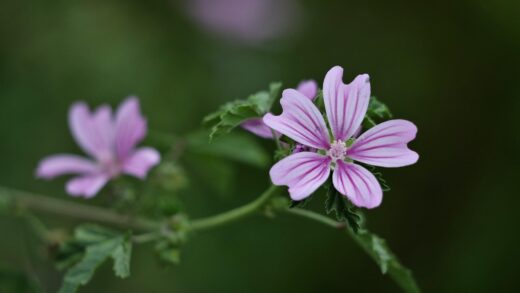Lantana is a remarkably resilient and rewarding plant to cultivate, known for its vibrant, multi-toned flower clusters that attract a plethora of pollinators. Its ability to thrive in hot, dry conditions makes it a staple in many gardens, offering a continuous display of color from spring until the first frost. Proper care, while not overly demanding, is crucial to unlocking its full potential, ensuring robust growth, and maximizing its prolific blooming capabilities. Understanding its basic needs regarding sunlight, water, and soil forms the foundation for a successful cultivation experience, allowing gardeners to enjoy its beauty with minimal fuss and maximum impact throughout the growing season.
The plant’s adaptability is one of its most celebrated traits, allowing it to flourish in a variety of garden settings, from containers and hanging baskets to sprawling landscape beds. This versatility, however, does not mean it is entirely self-sufficient, as strategic interventions can significantly enhance its performance and overall health. Key aspects of its care regimen include thoughtful watering practices, appropriate fertilization schedules, and regular pruning to encourage new growth and more abundant flowers. By mastering these fundamental elements, you can transform a simple lantana plant into a spectacular focal point in your garden design.
A crucial part of lantana care involves recognizing its growth habits and responding accordingly to maintain its desired shape and size. As a vigorous grower, it can quickly become woody and unkempt if left to its own devices, which can lead to reduced flowering on the older, less productive stems. Regular maintenance not only improves the plant’s aesthetic appeal but also stimulates the production of fresh, flower-bearing shoots. This proactive approach ensures that the plant’s energy is directed toward creating a lush, floriferous display rather than supporting overgrown, non-blooming branches.
Finally, successful long-term care also involves being mindful of the plant’s potential invasiveness in certain climates and its toxicity if ingested. While many modern cultivars are sterile and pose less of a risk, it is a responsible gardening practice to be aware of the characteristics of the specific variety you are growing. This knowledge, combined with a consistent care routine, will ensure that your lantana remains a healthy, beautiful, and well-behaved member of your garden ecosystem for years to come.
Understanding soil and location requirements
Choosing the right location is the first and most critical step in ensuring your lantana thrives. This plant is a sun-worshipper and demands a minimum of six to eight hours of direct, unfiltered sunlight each day to produce its signature profusion of flowers. A location that receives full sun exposure will result in the most vigorous growth and the most vibrant, abundant blooms. Inadequate light will lead to leggy stems, sparse foliage, and significantly reduced flowering, ultimately diminishing the plant’s ornamental value. Therefore, selecting a south-facing or west-facing spot in the garden is typically ideal.
More articles on this topic
The soil composition plays an equally vital role in the health of lantana, although it is notably forgiving in this regard. It performs best in well-draining soil, as it is highly susceptible to root rot if its feet are kept consistently wet. Heavy clay soils that retain excessive moisture should be amended with organic matter like compost or pine bark to improve their structure and drainage. Conversely, it tolerates poor, sandy, or rocky soils quite well, making it an excellent choice for challenging areas where other plants might struggle to establish.
The ideal soil pH for lantana is slightly acidic, generally ranging from 5.5 to 6.5, though it can adapt to neutral or slightly alkaline conditions. A soil test can provide valuable insight, but in most cases, standard garden soil will suffice without major adjustments. The key takeaway is that drainage is far more important than nutrient richness; in fact, overly fertile soil can sometimes stimulate excessive foliage growth at the expense of flower production. Resisting the urge to over-enrich the planting site is often a wise strategy for this particular plant.
When planting in containers or pots, using a high-quality, all-purpose potting mix is essential for providing the necessary aeration and drainage. Ensure the container has ample drainage holes at the bottom to allow excess water to escape freely. This prevents the soil from becoming waterlogged, which is a common cause of failure for potted lantana. The contained environment makes proper soil selection even more critical, as the roots have no escape from unfavorable conditions.
Watering practices for optimal health
Proper watering is a delicate balance when it comes to lantana, as it is a plant that boasts significant drought tolerance once established. For newly planted specimens, consistent moisture is key to helping them develop a strong and extensive root system. During the first few weeks after planting, you should water them thoroughly whenever the top inch of soil feels dry to the touch. This initial period of attentive watering is a crucial investment in the plant’s long-term resilience and ability to withstand drier conditions later on.
More articles on this topic
Once the plant is well-established, its water needs decrease dramatically, and it is far more likely to suffer from overwatering than underwatering. Established lantana in garden beds typically requires watering only during prolonged periods of drought or extreme heat when rainfall is scarce. A deep soaking once a week is generally more beneficial than frequent, shallow watering, as it encourages roots to grow deeper into the soil where they can find residual moisture. Always allow the soil to dry out considerably between watering sessions to prevent the onset of root diseases.
The signs of improper watering can be quite clear if you know what to look for. An overwatered lantana may exhibit yellowing leaves, wilting, and a general lack of vigor, which can be confusingly similar to the symptoms of underwatering. The key difference is the condition of the soil; if the plant is wilting while the soil is still damp, overwatering is the likely culprit. Conversely, an underwatered plant will have dry, brittle leaves and will quickly perk up after a thorough drink.
For lantana grown in containers, the watering schedule will need to be more frequent than for those planted in the ground. The limited soil volume in pots dries out much faster, especially during hot, sunny, and windy days. Check the soil moisture daily by inserting a finger into the pot; if the top inch or two is dry, it is time to water. Water thoroughly until you see it running out of the drainage holes, ensuring the entire root ball is saturated, and then allow the pot to drain completely.
Fertilization and nutrient needs
Lantana is not a heavy feeder and generally performs better with a lean fertilization regimen. Excessive fertilizing, particularly with high-nitrogen formulas, can lead to a lush, green plant with very few flowers. The plant’s energy gets diverted into producing foliage rather than the vibrant blooms it is known for. This is a common mistake made by well-intentioned gardeners who believe that more nutrients will equate to more flowers, when the opposite is often true for this species. A minimalist approach is almost always the most effective strategy.
For lantanas planted in garden beds with reasonably fertile soil, supplemental fertilization may not be necessary at all. However, if the soil is particularly poor or sandy, a light application of a balanced, slow-release granular fertilizer in the early spring can provide a gentle boost to start the season. Look for a formula with a balanced N-P-K ratio, such as 10-10-10, or one that is slightly higher in phosphorus to encourage blooming. A single application is often sufficient for the entire growing season.
If you prefer to use liquid fertilizers, you can feed your lantana with a half-strength, balanced liquid feed once every month or two during the peak growing season. This method provides more control and reduces the risk of over-fertilizing. It is particularly useful for container-grown plants, as the nutrients in potting soil can be depleted more quickly due to frequent watering. Always water the plant before applying liquid fertilizer to avoid burning the roots.
Observe your plant for signs of nutrient deficiency, which can include pale or yellowing leaves (chlorosis) or stunted growth, although these symptoms can also be caused by other issues like improper watering or soil pH. If you suspect a deficiency, a light feeding is warranted, but it is important to first rule out other potential stressors. In most garden situations, a simple top-dressing of compost in the spring provides all the necessary micronutrients for healthy growth without overwhelming the plant with excessive nitrogen.
Pruning and maintenance for continuous blooming
Regular pruning is one of the most important aspects of lantana care, directly influencing its shape, size, and flowering capacity. The primary goal of pruning is to encourage a bushy, compact habit and to stimulate the production of new growth, as lantana flowers on new wood. Throughout the growing season, light trimming or “pinching back” the stem tips can work wonders. This simple act prevents the plant from becoming leggy and encourages it to branch out, resulting in a fuller plant with significantly more flower clusters.
Deadheading, or the removal of spent flower heads, is another crucial maintenance task, particularly for older, fertile varieties of lantana. After a flower cluster fades, the plant will begin to produce small, dark berries. If these berries are allowed to develop, the plant will divert its energy into seed production, which can slow down or even stop the blooming cycle. By snipping off the faded blooms just below the flower head, you signal the plant to produce more flowers instead of seeds, ensuring a continuous display of color.
A more substantial pruning is often necessary in the early spring to rejuvenate the plant and remove any winter damage. This is the time for a “hard prune,” where you can cut the entire plant back to about 15-30 centimeters from the ground. While this may seem drastic, lantana is incredibly resilient and will respond with vigorous new growth as the weather warms. This annual hard prune removes old, woody stems that are less productive and encourages a fresh, dense flush of foliage and an abundance of blooms for the upcoming season.
Beyond these scheduled prunings, it is also good practice to periodically remove any dead, damaged, or crossing branches throughout the year. This type of maintenance improves air circulation through the plant, which can help to prevent fungal diseases like powdery mildew. A well-pruned lantana is not only more aesthetically pleasing and floriferous but also healthier and more resistant to pests and diseases, making it a more robust and low-maintenance addition to the garden.
Pest and disease management
While lantana is known for its hardiness, it is not entirely immune to pests and diseases. One of the most common pests to affect lantana is the lace bug, a small insect that feeds on the underside of the leaves. Their feeding activity causes the leaves to develop a stippled, yellow, or bleached appearance on the upper surface. In severe infestations, you may also see dark, varnish-like droppings on the undersides of the leaves. To manage lace bugs, you can often dislodge them with a strong spray of water or use insecticidal soap, being sure to thoroughly coat the leaf undersides.
Aphids and whiteflies can also occasionally become a problem, especially on plants that are stressed or grown in less-than-ideal conditions. These pests are sap-suckers that can cause leaves to curl and can excrete a sticky substance called honeydew, which may lead to the growth of sooty mold. Again, insecticidal soap or horticultural oil are effective treatments. Encouraging natural predators like ladybugs and lacewings in your garden can also provide excellent biological control and help keep these pest populations in check naturally.
In terms of diseases, the most prevalent issue for lantana is powdery mildew, which appears as a white, dusty coating on the leaves, stems, and sometimes flowers. This fungal disease is most common in humid conditions with poor air circulation. To prevent it, ensure your plants are spaced adequately to allow for good airflow and try to water at the base of the plant to keep the foliage dry. If an infection occurs, remove the affected leaves and consider applying a fungicide specifically labeled for powdery mildew control.
Root rot is another significant threat, but it is almost always a result of cultural practices rather than a primary disease. It is caused by soil-borne fungi that thrive in overly wet, poorly drained conditions. The best defense against root rot is prevention: plant your lantana in well-draining soil, choose containers with adequate drainage holes, and avoid overwatering. Once root rot has set in, it is very difficult to reverse, making proper site selection and watering habits the most critical components of disease management for this plant.
📷 Flickr / Szerző: Mauricio Mercadante / Licence: CC BY-NC-SA 2.0
















